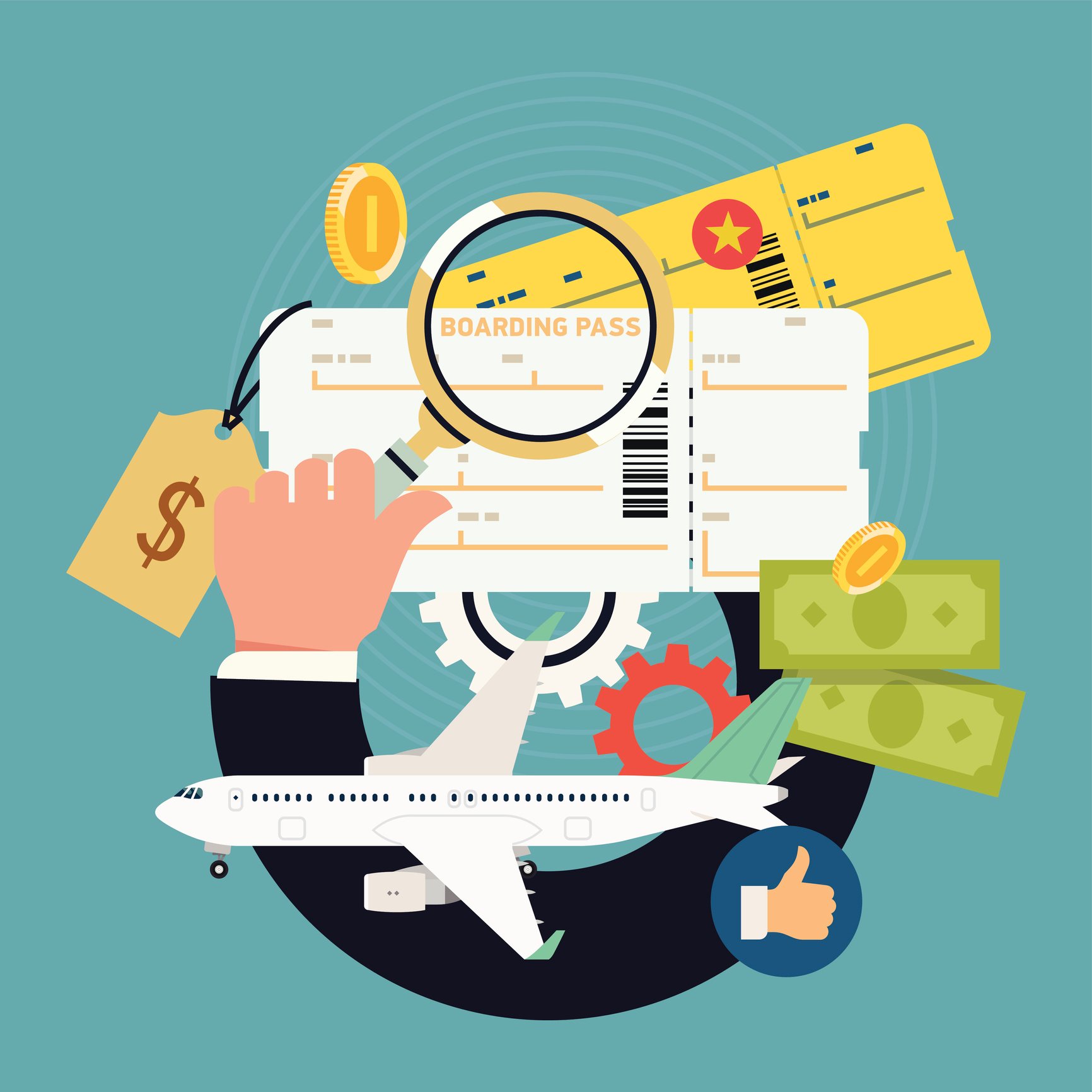

Expense management platforms and travel booking platforms, or online booking tools (OBTs), are two different applications created for different purposes.
Travel booking is focused on finding the optimal travel solutions at the best prices. Much like booking a trip online for personal vacations, business travelers are increasingly able to use their companies’ travel platform of choice to compare flights, choose the right hotel located where they need to be, and arrange for car rentals or services.
When traveling on behalf of a business, an employee may expense daily essentials like transportation, lodging, and meals. Some businesses offer per diems, or daily allowances, as an alternative to travel expenses. Employees can use this money how they see fit.
Expense management focuses on tracking all the ways employees spend money, only one of which – and usually one of the largest expenses for a business - is travel. These expenses could include airfare, hotel rooms, car rental or ground transportation, but also meals, conference passes, continuing education sessions, or entertainment. Perhaps your travelers need supplies for a sales presentation, or there’s an unexpected incident during the trip that the company will cover.
Travel platforms and expense management are both important for any company that is sending its people around the country or the globe to participate in business functions on its behalf. When travel program managers have accurate data for all expenses – not only travel – they’re able to save the company money, operate far more efficiently, and provide greater duty of care for travelers.
Expense management can prove challenging for many companies, but there are best practices that can help. In this article, we’ll review how to keep travelers in compliance with policy, standardize the approval process, use automation to boost travel program manager productivity, and find the right combined platform for both booking travel and managing expenses.
Expense management policies are critical. They provide a roadmap for travelers to understand what is and is not allowed to be expensed to the company. A solid travel expense management policy should address everything you frequently expect on a trip, such as airfare, ground transportation, hotel rooms, and meals, for instance. Most companies have these basic guidelines outlined fairly well.
But have you considered the non-routine expenses you may have seen from past travelers? Does the company keep a record of those expenses? Is there itinerary management systems put in place? You might want to discover what travelers’ experiences have included in the past. There may be patterns that deserve to be addressed, such as when travelers go to specific locations in the world or attend certain conferences.
Does your policy take into account mobile phone services or internet access? How do you address medical expenses or emergencies on the road? A strong policy includes and communicates these details as well as those other “standard” items.
In addition to what the company will reimburse, it is equally important to have clear guidelines on what is not allowed. Keeping your policy current, to address changing technology needs, health and safety guidelines, and other permissible expenses helps reduce unexpected costs for the company and helps travelers feel more confident about their trips when they’re submitting expense reports.
And finally, keep in mind that there could be a few exceptions to your rules. If, for instance, the group you sent to a conference has a lead to build more business but requires a change of plans to meet the prospects, would that be allowed? It would seem to make sense to not waste that opportunity while the right people are already in that location.
To keep the policy as efficient and clear as possible, determine what the process for exceptions should be before you need to use it. In this way, if a quick decision needs to be made, say, to answer those salespeople right away, you’ll be ready to help them out. And you’re more likely to be viewed as a collaborative resource than a roadblock. If policies and delays prevent your sales team from successfully making more sales, your travelers will be unlikely to stay in compliance.
Expenses can seem like a moving target. Anyone who’s attended a business conference probably knows that the later you register for it, the more the price increases. Conversely, if you register early on, you may be able to take advantage of an “early bird registration” price, which can be as much as a few hundred dollars less than the regular price. And we’ve all experienced price differences between when we first explored that vacation plane fare and when we actually booked it. It’s clear that timing can play a big part in how much we pay for services.
This means that if your program doesn’t have an efficient, repeatable process, your expenses could change for no reason other than delays in approvals. Unexpected negative consequences may also arise for different reasons. Delays in reimbursing your travelers could throw off your accounting, making legally required financial reporting inaccurate. And for companies that have employees waiting to be reimbursed, you may end up with some unhappy, and potentially reluctant, travelers because of those delays.
What about companies that require multiple approvals in their expense approval process? It can seem redundant and inefficient, but, especially for larger organizations, may be necessary. For example, you may have a department whose manager needs to approve where team members are going and why so she can manage the department budget. Only after that’s been finalized is it appropriate for the travel manager to approve, as the individual unit budgets roll up to the corporate total.
Whether there’s need for only one approval or multiple approvals are necessary, a well-defined and standardized approvals process helps the entire organization manage its budgets and operationalize its travel and expense program. In the past, travel and expense management programs have been manual, time-consuming processes.
Today, there are better, modern solutions available that can remove tedious, repetitive tasks such as entering individual receipts by hand, calculating reimbursements, and tracking down travelers for their missing paper receipts. And there’s added benefit in knowing that, when there’s a standard program in place, any expenses that are outside of policy are more easily flagged for further review. Instead of having to manually review every expense, the more time-consuming effort is reserved for the exceptions.
Modern OBTs combine the power of automation with convenience for travelers and control for travel program managers, who are ultimately responsible for things such as traveler compliance, traveler health and safety, and many other duties. These online booking platforms are highly customizable, so they can restrict travel travelers’ choices to only provide the options that fall within corporate policies. When employees book travel through their OBT, everything is automatically in compliance – a huge time savings for travel managers everywhere.
For travelers, not only is booking necessary trips more efficient but creating expense reports becomes significantly easier as well. Automated expense solutions allow travelers to scan paper receipts into the platform from a mobile device, and from there, directly into an expense report.
Expense reports may even be partially completed before the employee heads to the airport. Reports created in the platform are available for immediate review and approval by travel managers, usually with just a few clicks. The entire process can now be reduced to minutes, allowing both traveler and travel manager to get back to higher value work.
The same is true for employees during their trips. As they collect receipts for meals, entertainment and other necessary expenses, they can simply use their device’s camera to capture a digital version of receipts that go directly into their expense report or e-wallet. By the time they’re home, the traveler can immediately submit the expense report for approval.
This way, the traveler can hit the ground running back at the office without delays of finding and recording each receipt manually – or worse, dealing with misplaced receipts. Travel managers can add higher productivity, decreased traveler stress and happier employees to their reasons for their travel management programs’ improved ROI.
In recent years, we’ve seen an increased emphasis on integrating travel and expense functions. This makes sense – there's value to having that frictionless connection between the two applications, where an expense report is auto populated when a traveler books a trip. For travelers, this means they save time by finishing a portion of their expense report before they even leave for their trip. And the seamless connection means no need for yet another username and password. These things save time so the traveler can focus on more important activities.
Making it easy for travelers to use the platform is an important factor in platform adoption rates, or how many of the company’s travelers use its travel and expense platform for booking all of their travel and recording all related expenses. It’s important for a company to select travel and expense solutions that are as intuitive to use as possible. Most people are, by now, used to booking trips for their personal lives online.
Online consumer platforms are fairly straightforward and don’t really require training to accomplish the tasks. Business travelers now expect the same kind of ease and choices for their work trips. Travelers who are in control of their own experience, who can use their mobile devices throughout their trips, and who are empowered through the platform to easily make changes as needed, for instance, are much more likely to adopt the platform and, therefore, stay in compliance with company guidelines.
For companies, integration means improved data accuracy on both the amount charged and who is charging the company. And with integration comes enhanced data, combining travel and expense. With more travel and expense data, a company can more efficiently track travelers for their safety, track policy adherence, and run analytics to evaluate their programs. However, integration is only worthwhile if you can bundle together the best applications for you.
Integration is valuable, but only when the travel and expense products are good products. The problem is that it’s hard to do both travel and expense well; they are two different applications with two different missions. Travel is focused on finding the optimal travel solution, saving travelers time and the company money, while expense is focused on tracking all the ways employees spend money, travel being only one way they do that. The best expense application providers focus on their core expense products.
Rather than thinking in terms of integration, we recommend you think in terms of “bundling.” Every company has unique needs and should pick the best expense management platform to address them. Then, bundle that with a travel product that is, most likely, already integrated with your expense platform of choice. Adding a quality travel product should not take up time from the IT, management, or HR teams.
Just because you’ve implemented an integrated travel and expense management platform doesn’t mean you can forget what we discussed earlier about process. In fact, corporate travel policy needs to be even more clearly defined.
Reviewing travel policies on a regular basis helps address trends and changes in your industry, or even geo-political circumstances so that you’re confident your policies are effective and not unexpected or unreasonable for travelers no matter the business landscape your company may be in. It’s also advisable to get an executive sponsor or executive buy-in, especially when defining the boundaries of the program and a process for handling exceptions.
Once you’ve done the hard work of defining your corporate policies up front, an integrated, automated, online, and mobile travel and expense platform can save large amounts of time and increase productivity for everyone through the rest of the year, which can make the process a worthwhile investment of time and resources.
It can also help save your business a lot of money. If your online booking solution offers GDS integrations, you’ll be assured you’re getting the best prices along with extensive choices for your travelers. The data the platform provides can also assist travel managers in negotiating better rates with the more popular airlines and hotels your travelers tend to select.
Again, your corporate travel policy should never be set in stone. It’s wise to reevaluate, refine and improve your policies in relation to current global events, potential political conflicts, the state of the economy, and of course, everyday inflation. By doing so, you’ll ensure travelers can make the best decisions for their business and the company, no matter when and where they’re going.
Pete Solomon is the Senior Director of Alliance Partners at Deem, the online booking solution for corporate travel. Pete is a business development and partnership professional, helping companies develop and execute strategies to accelerate growth.
From figuring out what to pack to scheduling an itinerary,, preparing for a business trip can...
 by Rob Browne
by Rob Browne
Business travel is a trillion dollar industry. With all of the money that is spent on travel...
 by Rob Browne
by Rob Browne
Data has always been the cornerstone of all strategic business decisions.
 by Nupur Chaturvedi
by Nupur Chaturvedi
From figuring out what to pack to scheduling an itinerary,, preparing for a business trip can...
 by Rob Browne
by Rob Browne
Business travel is a trillion dollar industry. With all of the money that is spent on travel...
 by Rob Browne
by Rob Browne
Never miss a post.
Subscribe to keep your fingers on the tech pulse.



